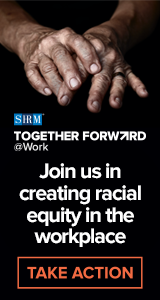It’s no secret that your website is one of your organization’s most powerful tools. It communicates your brand to the world and is an important resource for all of your audiences. This includes your current and prospective customers, partners, vendors, current and prospective employees — anyone and everyone on the web who seeks you out.
This means your website should be easily accessible and usable to all types of individuals.
What is Web Accessibility?
Web accessibility refers to the design and development of a website that enables it to be used by those with disabilities.
An accessible website is built in way that ensures those with disabilities or other impairments can effectively understand, navigate and interact with it. This includes disabilities and impairments that are:
- Auditory
- Cognitive
- Neurological
- Physical
- Speech-related
- Visual
For example, is your website laid out and coded in a way that effectively allows a screen reader to dictate the content to a visually impaired individual? Can your website be navigated with just a keyboard, and not a mouse, for individuals with physical limitations?
If not, you may have an accessibility problem.
Why Does Your Website Need to Be Accessible?
Virtually everything in our lives is shifting online. This includes personal activities like shopping, banking and even seeing your doctor. This also includes business and educational activities, like finding and applying for a job, conducting research, commerce and more.
From a human resources perspective, having a well-functioning, accessible website is particularly important in creating an inclusive workplace. This not only includes those employees with disabilities, but also older employees, employees who work remotely with a slower internet connection and others.
Web accessibility is also crucial to recruiting diverse talent and ensuring you are an equal opportunity employer. The last thing you want is to lose out on a stellar candidate because they can’t find or navigate your careers page, watch your video content, or read your leadership bios.
How Can You Improve Your Web Accessibility?
The World Wide Web Consortium’s Web Content Accessibility Guidelines (WCAG) 2.0 outlines recommendations to help organizations ensure their websites are accessible to everyone.
The full guidelines are lengthy and complex, and they are geared toward website developers and technical teams. Here is a high-level summary of these recommendations:
Your Website Must be Perceivable
- Provide text alternatives for any non-text content so that it can be changed into other forms people need, such as large print, braille, speech, symbols or simpler language.
- Provide alternatives for time-based video and audio media, including captions or time-marked video or audio descriptions.
- Create content that can be presented in different ways (for example, a simpler layout) without losing information or structure.
- Make it easier for users to see and hear content, including separating foreground from background with sufficient color contrast.
Your Website Must be Operable
- Make all functionality available from a keyboard.
- Provide users enough time to read and use content.
- Do not design content in a way that is known to cause seizures, i.e., no flashing screens or images.
- Provide ways to help users navigate, find content, and determine where they are on the site.
Your Website Must Be Understandable
- Make content readable and understandable. For example, verbiage should not be unnecessarily complicated and should be able to be translated into other languages based on the user’s default.
- Make web pages appear and operate in predictable ways.
- When user input is required on a web page, help them avoid and correct mistakes by providing appropriate labels, instructions and error identification capabilities.
Your Website Must Be Robust
- Maximize compatibility with current and future user agents, including assistive technologies like screen readers, screen magnifiers and alternative keyboards and pointers.
It can be difficult to comply with all of these recommendations. Be sure to work with your web team to effectively assess and implement appropriate improvements on your own website and other online tools.






